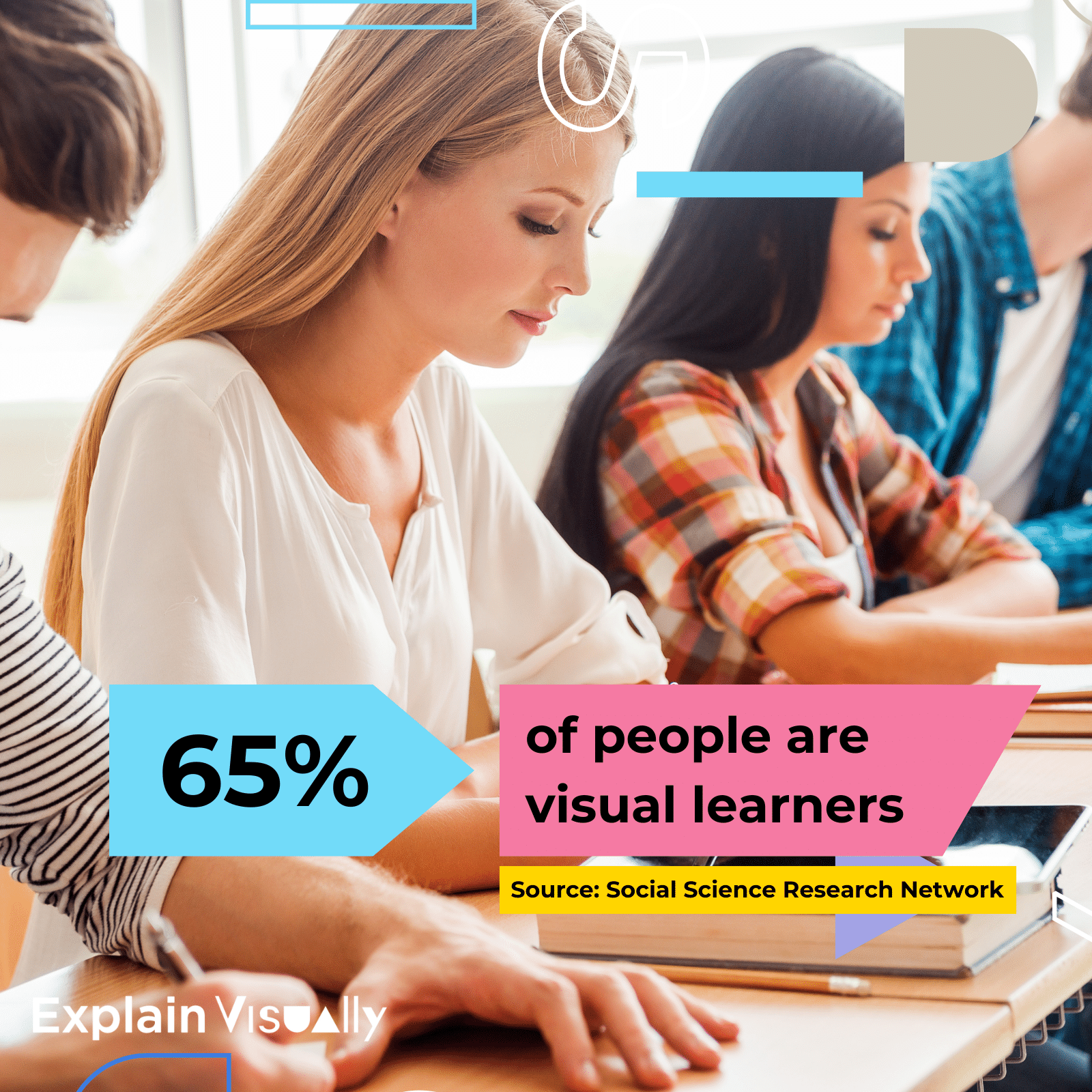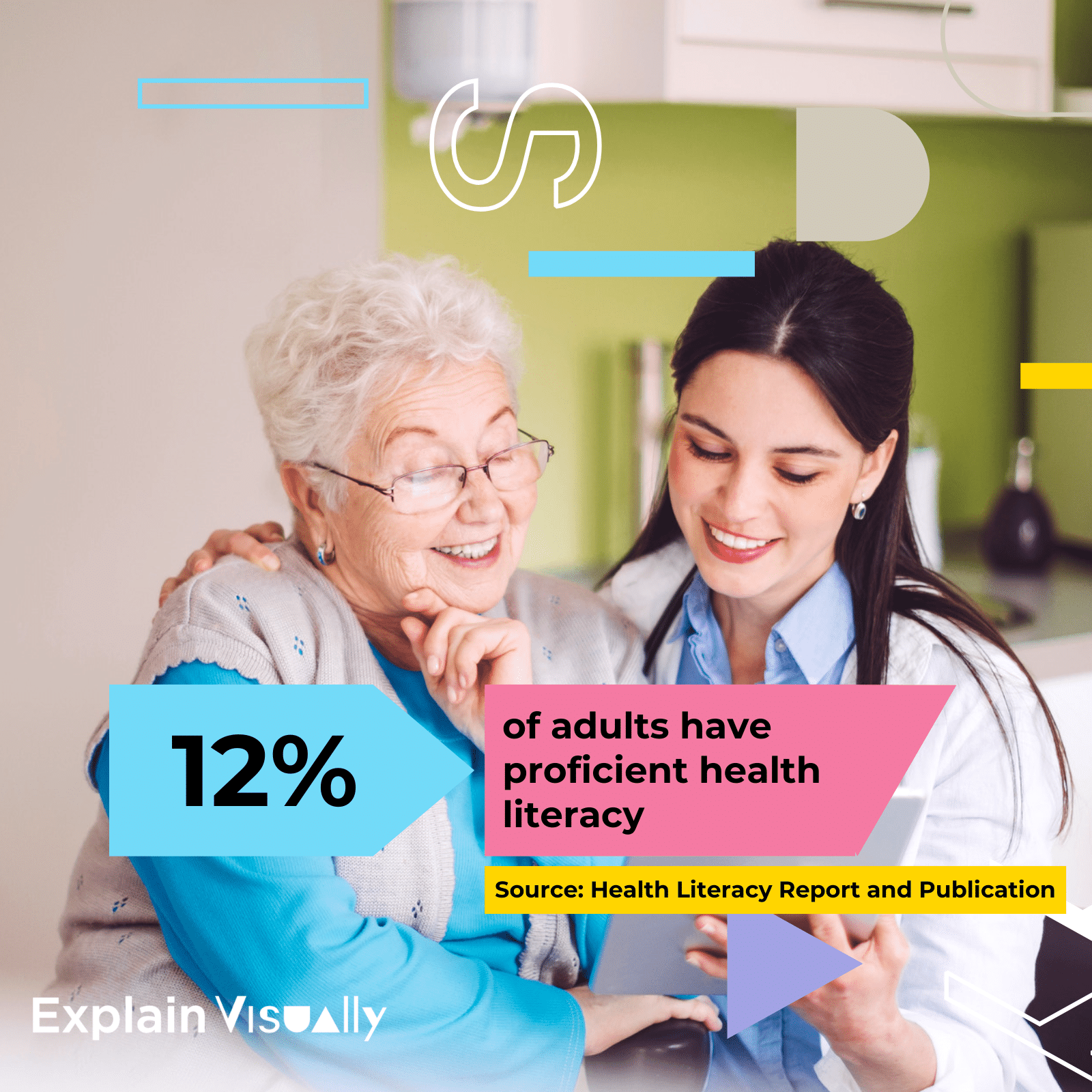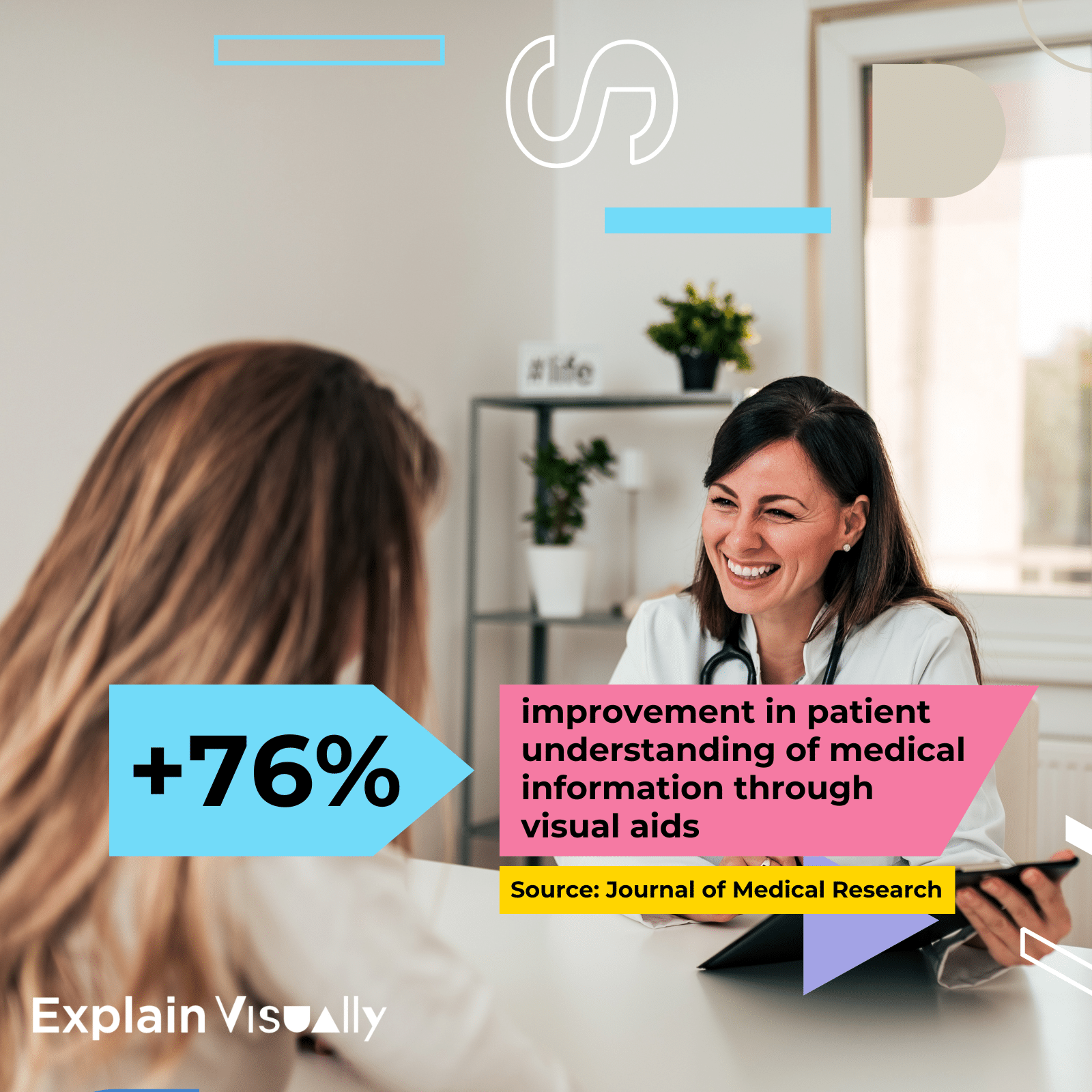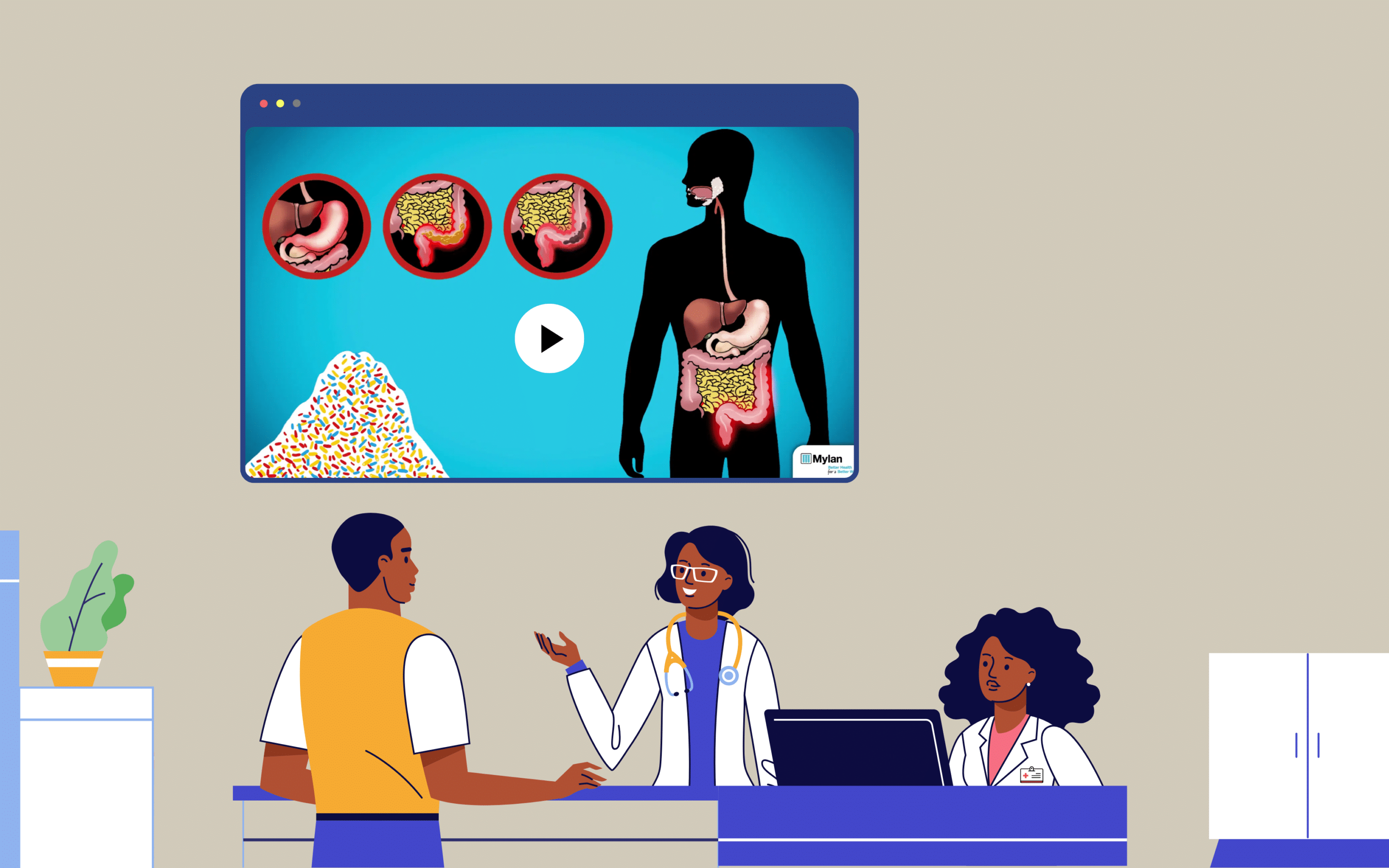Introduction:
The healthcare industry is changing rapidly thanks to new technologies that make it easier to care for patients and improve their health. One of the most exciting advancements is the use of animation in patient education. Explaining medical information can be tough because doctors often use complex terms that are hard for many people to understand. Traditional methods like pamphlets and verbal explanations are usually not enough. This is where animation can make a big difference. Animation uses visuals to break down complicated medical ideas into simple, easy-to-understand videos. These animations can show how a procedure works, explain a treatment plan, or illustrate how a part of the body functions. This visual approach helps patients of all ages and backgrounds understand their treatments and health better.
Animations are great for bridging the communication gap between doctors and patients. They turn complicated medical language into simple visuals, making it easier for patients to understand their conditions and what they need to do to stay healthy. Another benefit of animation is that it makes learning about health more exciting. Animated videos can hold patients’ attention better than reading a pamphlet or even listening to a doctor, especially when complex terms are used. Additionally, when patients are more interested, they are more likely to follow their treatment plans and therefore get well sooner.
Animations are incredibly versatile and accessible. They can be shared on websites, social media, and patient portals, making them easily available to a wide audience. Plus, they can be customized for different languages and cultures, making them more contextually relevant. In this article, we’ll explore how animation is transforming patient education. We’ll see how it simplifies complex information, helps patients understand their health better, and keeps them engaged. We’ll also share some real-life examples of how hospitals and clinics are using animation to assist their patients. By incorporating animation, healthcare providers can create a more informed and involved patient community.
The power of visual learning
Animations can simplify complex medical information. They transform intricate concepts and procedures into clear, step-by-step visual explanations that are easy to follow. This simplification is crucial because understanding medical information can be challenging for many patients. Medical jargon and complex terms can be overwhelming, but animations break down these barriers by presenting information in a straightforward manner. By using animations, healthcare providers can ensure that patients have a clear understanding of their health conditions, treatments, and the necessary steps to stay healthy.
Visual learning is incredibly effective, and many people benefit from this method. Research from the Social Science Research Network shows that around 65% of people are visual learners. This means they understand and remember information better when it’s presented visually rather than through text or speech alone. Because of this, animations are perfect for patient education. By using animations, healthcare providers can help more patients grasp and retain essential health information, leading to better adherence to treatment plans and improved health outcomes.

Bridging communication gaps
Communication between healthcare providers and patients often faces significant challenges. Medical terminology and complex explanations can leave patients feeling confused and overwhelmed. This communication gap can lead to misunderstandings about diagnoses, treatment plans, and self-care instructions, ultimately affecting patient health.
Poor health literacy significantly impacts patient outcomes. According to the National Institutes of Health, low health literacy is associated with higher rates of hospitalization and less frequent use of preventive services. For instance, patients with low health literacy have higher rates of cardiovascular deaths and increased hospital readmissions because they often struggle to understand and follow medical instructions. Another study from Health Literacy Reports and Publications highlights that only 12% of adults have proficient health literacy, which disproportionately affects vulnerable populations such as non-white racial and ethnic groups, the elderly, and those with lower socioeconomic status.

By using animations, healthcare providers can improve health literacy among patients, helping them understand vital health information and make informed decisions about their care. With the end result being healthier patients.
Enhancing patient engagement
Patient engagement is crucial for effective treatment and recovery. When patients are actively involved in their healthcare, they are more likely to follow the doctor’s advice, attend follow-up appointments, and manage their health conditions effectively. Engaged patients typically experience better health outcomes and higher satisfaction with their care.
Animations play a significant role in enhancing patient engagement. By transforming complex medical information into visually appealing and easy-to-understand videos, animations capture and maintain patient interest more effectively than traditional methods like pamphlets or verbal instructions. For instance, animated materials can show how a procedure is performed, explain the benefits and side effects of treatments, and demonstrate self-care techniques, all of which can help patients feel more informed and confident in managing their health.
Research supports the effectiveness of visual aids in increasing patient engagement. A study published in the Journal of Medical Internet Research found that the use of visual aids increased patient understanding by 76%. Therefore, in creating a healthier socjety, animations can definitely play a role.

Moreover, digital health interventions, including animations delivered through smartphones and tablets, have been shown to improve patient knowledge, adherence to treatment instructions, and satisfaction with care. Another systematic review in the Journal of Medical Internet Research highlighted that such interventions are most effective when they provide timely information and frequent updates, with up to 82% of outcomes showing positive effects when interventions lasted less than a month and included regular notifications.
Versatility and accessibility
Animations in healthcare are a versatile and accessible tool for patient education. They can be distributed across a variety of platforms, such as websites, social media, and patient portals, ensuring they reach a wide audience. This broad distribution helps cater to patients who prefer digital content over traditional methods like pamphlets or verbal instructions.
One of the significant advantages of animations is their ability to be customized for different languages and cultural contexts. This customization ensures that educational materials are inclusive and relevant to diverse populations, addressing the specific needs and preferences of different patient groups.
Moreover, the widespread use of smartphones and the internet enhances the accessibility of these digital educational tools. According to a 2023 report by Pew Research Center, 90% of U.S. adults own a smartphone, making it easier for patients to access digital health resources anywhere and anytime. This high rate of smartphone ownership supports the distribution and effectiveness of animations in reaching a broad audience.
Animations not only provide a flexible and engaging way to deliver medical information but also ensure that this information is accessible to a diverse and technologically connected population. By leveraging these digital tools, healthcare providers can significantly enhance patient education and engagement.
Real-life applications and success stories
Hospitals and clinics around the world are increasingly using animations to improve patient education and engagement. These animations simplify complex medical procedures, making them easier for patients to understand and less intimidating.
Case studies of hospitals and clinics using animations:
Austin Visuals:
Austin Visuals specializes in creating 3D surgical animations that help patients understand their upcoming surgeries. These animations turn complex medical jargon into easy-to-understand visual stories, aiding informed decision-making and reducing patient anxiety. Their services range from visualizing surgical procedures to patient journey videos, enhancing both patient education and medical training.
Colorectal cancer surgery animation
Houston Colon Specialists developed a detailed 3D animation to educate patients about colorectal cancer surgery. This video gives a comprehensive look at the open surgical procedure, helping patients understand the steps involved and what to expect during and after the surgery. This visual aid is crucial for patient education, reducing anxiety and improving understanding of the surgical process. You can view the animation here.
Rotator cuff shoulder surgery animation:
Nucleus Medical Media has created an informative 3D animation explaining rotator cuff shoulder surgery. This video helps patients visualize the procedure, understand the anatomy involved, and grasp the recovery process. It is a great way for patient education, ensuring that patients are well-informed before undergoing surgery. You can watch the video here.
https://youtu.be/T8SWKH18FIQ?si=2Ax93zgWkbXTQ5nx
Robotic surgery animation:
An animation detailing how robotic surgery works provides patients with insights into this advanced surgical technique. The video explains the benefits and functionality of robotic surgery, making it easier for patients to understand how these procedures are performed and why they might be beneficial. This video can be watched here.
https://www.youtube.com/watch?v=ebg20r3D9OI
Flobotics and healthcare paperwork animation:
Flobotics collaborated with us to create an engaging animation explaining the benefits of Robotic Process Automation (RPA) in healthcare, particularly for managing paperwork. The animation breaks down complex concepts of RPA, demonstrating how it streamlines administrative tasks, reduces errors, and improves efficiency. This visual representation helps healthcare providers and patients understand the advantages of automating paperwork processes, ultimately enhancing operational effectiveness.
Conclusion
Animations are a highly effective tool for patient education. They simplify complex medical information, making it more accessible and understandable for patients. By translating medical jargon into clear and engaging visuals, animations help bridge communication gaps between healthcare providers and patients, leading to better comprehension and adherence to treatment plans. Moreover, animations significantly enhance patient engagement, as evidenced by studies showing that 87% of patients prefer animated videos over text-only explanations.
The potential of animation in healthcare is huge. As technology continues to advance, animations will become even more sophisticated, incorporating elements like virtual reality (VR) and augmented reality (AR) to provide immersive educational experiences. These innovations will not only improve patient understanding but also offer new ways for medical professionals to train and refine their skills in a risk-free environment.
Explain Visually specializes in creating healthcare animations that bridge the gap between complex medical information and patient understanding. For more information on how our professionally made animations can enhance your healthcare communications and patient education needs, contact us!
This focus on specialized healthcare animations underscores our commitment to enhancing understanding and interaction through innovative visual solutions, preparing healthcare providers and patients for the challenges of modern medicine.
To learn more about how tailored healthcare animations can revolutionize patient education and engagement, visit our dedicated healthcare animation page.


